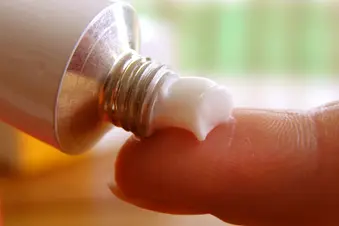
Eczema is a group of skin conditions that can cause itching, dryness, rashes, scaly patches, blisters, and infections. Atopic dermatitis is the most common type of eczema. It affects 16.5 million adults in the United States. Atopic dermatitis is caused by genetic and environmental factors. The skin barrier dries out and makes you itchy. People with atopic dermatitis have overactive immune systems that overreact to irritants.
Although there is no cure for atopic dermatitis, it’s possible to manage its symptoms with a daily skin care routine and your doctor’s help.
Know the Factors That Affect You
Common symptoms of atopic dermatitis, such as itching, dryness, and rash, can come and go. If symptoms return, it’s called a flare or flare-up. These flare-ups are caused by several factors, such as changes in temperature, pet dander, dust, perfumes or scented soaps, pollen, and any other allergens that come into contact with your skin.
Foods and drinks can affect the frequency and magnitude of flare-ups. Researchers have found that the following foods might cause a flare-up of atopic dermatitis:
- Eggs
- Citrus
- Soy products
- Cow’s milk
- Sugar
- Nuts
- Wheat
- Gluten
The factors that can cause a flare-up vary from person to person. Therefore, there is no general nutritional or dietary guide to prevent flare-ups of atopic dermatitis. You need to pay attention to how your skin reacts when you eat certain foods.
One solution to finding out which foods or drinks can cause flare-ups is to try a food elimination diet. If you think a food has made you react, remove it for a while. Then reintroduce it into your diet little by little. If you notice any changes in your skin again, it’s very likely that the food is triggering symptoms.
In general, if you don’t have food allergies, then food is probably not what’s causing the flare-up. Even if you don’t have food allergies, certain ingredients and spicy foods, such as chili peppers, can cause inflammation and a flare-up.
Treatments to Control Atopic Dermatitis
Just as the symptoms of atopic dermatitis vary, so do their treatments. After examining your skin and looking at the severity of your symptoms, your doctor can recommend a treatment plan that is right for you. An effective plan may include avoiding certain foods, using a moisturizer every day, and taking prescription or over-the-counter (OTC) medicines.
OTC medicines. Creams containing at least 1% hydrocortisone can relieve itching. Even though you don’t need a prescription to get these creams, it’s important to follow your doctor’s directions. Typically, you apply hydrocortisone to the affected area no more than twice a day before you apply your moisturizer. Ibuprofen and naproxen are OTC medicines that can relieve inflammation associated with atopic dermatitis. To reduce severe itching, your doctor may recommend you also take an antihistamine.
Prescription drugs. When OTC medicines don’t relieve symptoms of atopic dermatitis, your doctor might prescribe something stronger such as topical steroids. Some topical steroids are stronger than others. However, stronger steroids also have more serious side effects, even thinning of the skin.
Your doctor might prescribe immunosuppressants. These medicines turn off certain cells in the body and prevent or relieve some symptoms, such as itching and inflammation.
If you have a more severe case of atopic dermatitis or your symptoms don’t go away with topical medicines, your doctor might prescribe one of the following:
- Abrocitinib (Cibinqo)
- Dupilumab (Dupixent)
- Tralokinumab-ldrm
- Upadacitinib (Rinvoq)
Abrocitinib and upadacitinib are pills, and dupilumab and tralokinumab-ldrm are injections applied just under the skin.
Skin Care
In addition to taking prescription and OTC medicines, you need to maintain a daily skin care routine:
- Use warm water when showering or bathing, and keep baths and showers to no more than 10 to 15 minutes.
- Use a cleanser made for delicate skin. If you prefer to use bar soap, make sure it’s unscented.
- Do not scrub your skin when showering, bathing, or drying off with a towel.
- Pat your skin dry but don’t dry it completely.
- Apply the topical medicine your doctor recommended on the affected skin.
- Apply moisturizer before your skin dries completely.
- Allow your skin to absorb the moisturizer and then get dressed.
Use a moisturizer that contains ceramides and hyaluronic acid. Ceramides form a protective layer on the skin that retains moisture. Hyaluronic acid moisturizes and forms a protective barrier on the skin.
Show Sources
Photo Credit: danielle71/Thinkstock
American Academy of Allergy, Asthma & Immunology: “Dermatitis atópica Información general,” “Eczema (Atopic Dermatitis) Overview, Symptoms & Diagnosis and Treatment & Management).”
Cleveland Clinic: “Eczema.”
National Eczema Association: “Available Eczema Treatments,” “Eczema Stats,” “What is Eczema?”
Mayo Clinic: “Atopic dermatitis (eczema).”
UCLA Health: “Anti-inflammatory diet can help find eczema triggers.”